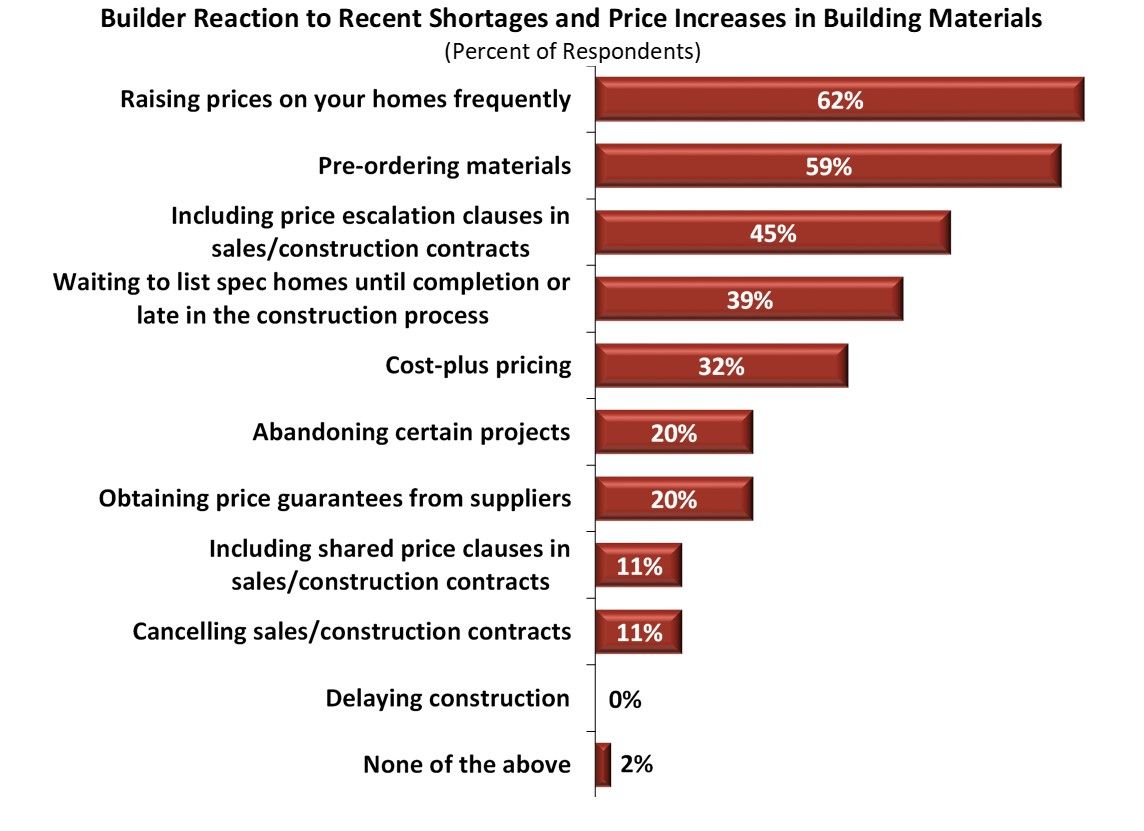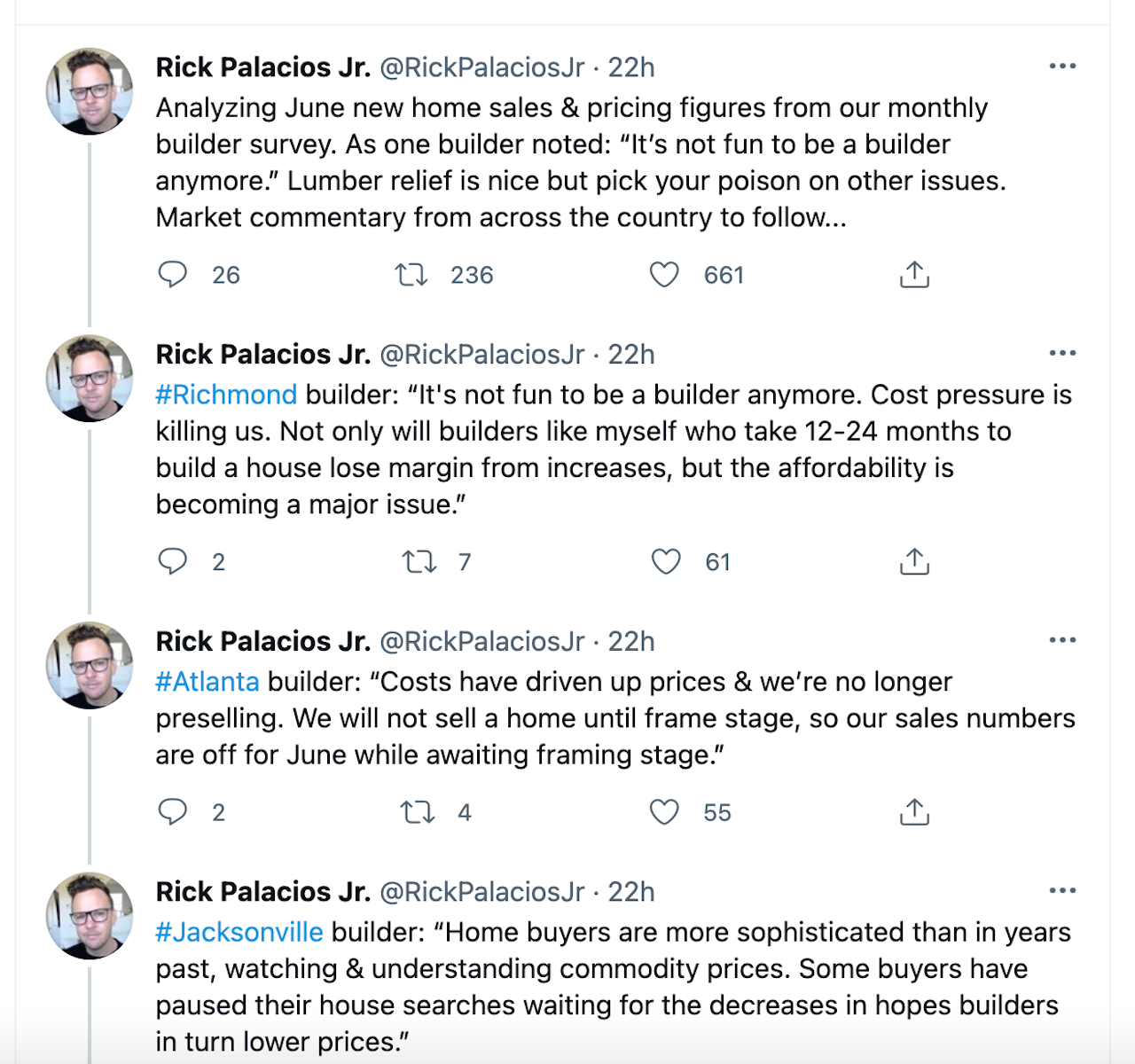Marketing & Sales
The Builder's Dilemma: Defeatism Or Determination
Post-pandemic post-traumatic stress crops up as a risk to morale and focus in the ranks among builders as they encounter an unending barrage of real-time challenges. The moment will redefine housing's leaders.
Glaring realities of the back-half of 2021.
Building new homes and communities is hard, no doubt.
It takes a whole lot of money upfront, considerable risk to prospects of making it back thanks to forces and politics beyond the control of the builder, and, these days, a just-this-side-of-absurd whac-a-mole of extra conditions, considerations, risks, doubts, and threats factoring into the bargain.
Discouragement, resignation, even anecdotal commentary with a distinct whiff of deflated and demoralized attitude at a basic level of "why we do this work" has become, increasingly, a marker of post-pandemic post-traumatic stress among builders.
Have a look at National Association of Home Builders vp for Survey and Housing Policy Research Paul Emrath's analysis of a passel of stress-points and reflexive reactions to them that have come out of recent questions added to the most recent monthly NAHB/Wells Fargo Housing Market Index (HMI).

The June survey asked the HMI panel of single-family builders how their businesses have reacted to recent shortages and price increases in building materials. As previously noted, the most common reactions (cited by 62 and 59 percent of builders, respectively) were raising the prices on their homes frequently and pre-ordering materials, followed by price escalation clauses (45 percent), waiting until late in the construction process before listing spec homes (39 percent) and cost-plus pricing (32 percent). Only 2 percent indicated they had adopted none of the listed techniques for dealing with the shortages and rising cost of materials.
Of course, business and operational models and forecasts exist so that real-time reactions and constant course-corrections, and 180s on prices, delivery schedules, and other performance measures can be kept to a minimum.
That's all out the window in today's supply shocked, price-whacked, schedule-disrupted operational landscape.
John Burns Real Estate Consulting director of research Rick Palacios this weekend released a Tweet storm of quoted-but-unattributed commentary from the front lines of homebuilding's besieged and beleaguered job-sites and divisional and regional management networks.

Calculated Risk's Bill McBride, being both human and of keen editorial judgment, selected one remark as the headline to one of his posts yesterday:
Homebuilder Comments in June: “It’s not fun to be a builder anymore.”
Two critical matters here to take stock of immediately and urgently.
- If "it's not fun to be a builder," imagine what it's like to be a builder's prospective customer who may or may not have been priced out of the market during the past few months or so.
- If the onset of the Covid-19 pandemic in February and March 2020 signaled a defining moment for housing and homebuilding company leaders, today's whipsawing, volatile, hyperbolic environment – both on a socio-economic plane and among one's own team members, customers, and other direct stakeholders – is equally, if not more, a defining moment.
Here, from two Bain & Company partners – James Allen and Dunigan O’Keeffe – in a timely contribution to Harvard Business Review – are five imperatives leaders in any field, but especially homebuilding, and especially now, need to act on at a moment where morale is so clearly under severe duress.
The issue for leaders is to get beyond the talk and the lip-service here, and make these principles feel like they're real and in action.
They co-create their company’s purpose. The crisis reinstated the primacy of purpose — and purpose can’t be divorced from people. Engage the firm’s heroes to align on the “what” and “why” of the company mission, but empower them to figure out the “how.”
They identify and share lessons from their top Formula One teams. The energy of winning drivers and crews can inspire managers to free the organization from the matrix. They will also come to recognize speed as a critical source of competitive advantage.
They establish teams of star players to take on their biggest challenges, role modeling new ways of working for the rest of the organization.
They challenge senior leaders to embrace conflict. It’s up to executives to balance the tensions between speed vs. scale, innovation vs. routine, and running the business vs. changing it. In order to strike the right balance, they must leave their egos at the door and tune in to the voices of heroes.
They keep doing what they’re doing. Leading CEOs plan to continue using town halls to share and commend hero stories — inspiring future generations of heroes. They will invest heavily in mentorship and apprenticeship, recognizing that heroes will write the future of the company.


